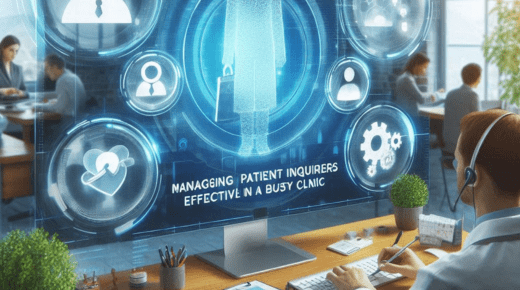
medical answering service
For those working in a medical clinic or doctor’s office, dealing with patient inquiries is a constant challenge. Ringing phones, piled-up voicemails and email inboxes, walk-in questions; it can quickly become overwhelming for staff. But prompt, professional responses are crucial for providing excellent patient care and experience.
Prioritize and Streamline
Not all inquiries are equally urgent. Develop a system for prioritizing requests based on the level of importance and established protocols. For example:
- emergencies and situations requiring immediate medical advice get top priority.
- prescription refill requests, appointment scheduling, and medical records access are top priority.
- general health questions, billing inquiries, and appointment reminders are mid-level.
- requests for things like new patient forms, directions or clinic hours can wait.
Establish reasonable response time targets for each priority level, such as responding to the highest priorities within 1 hour. Use color coding, flags, or other visual cues to quickly identify urgency.
Implement Patient Portals
Give patients a self-service option by implementing a secure online patient portal. This allows them to easily access their health records, test results, appointment info and billing details themselves 24/7. The portal can also automate routine requests like:
- scheduling appointments and receiving reminders.
- requesting medication refills.
- updating insurance/contact info.
- submitting intake forms before appointments.
The more patients can self-serve, the fewer basic inquiries your staff has to field.
Maximize Efficiency with Tech Tools
Beyond patient portals, leverage other technology designed to streamline patient communication and documentation:
- eHR (Electronic Health Records) systems to digitize and integrate all records.
- hIPAA-compliant messaging apps for fast, secure staff communication.
- aI chatbots to instantly answer FAQs on the clinic website.
- cloud-based phone/messaging systems with helpful features like call queueing.
Investing in the right tools keeps everyone organized and on the same page.
Cross-Train Your Team
Make sure all relevant staff are properly trained to assist with common patient inquiries, not just dedicated call center employees. Cross-training allows you to:
- ensure backup coverage during high-volume times.
- have clinicians field certain medical questions directly.
- enable warm handoffs between teammates for complex cases.
The broader your team’s knowledge base, the smoother your inquiry management will be.
Utilize Scripts and Knowledge Bases
Develop thorough FAQs and approved scripts for managing the most frequent patient questions and scenarios. Staff can quickly reference these for:
- how to properly document incoming requests.
- clear protocols for issues like medication changes, billing problems, medical advice, etc.
- consistent, on-brand language for all patient communications.
- up-to-date info on policies, insurance details, new services and more.
Standardizing inquiries minimizes mistakes and increases efficiency.
Consider Overflow Support
Even the most well-oiled machine can get overwhelmed with call/message volume. Having an overflow solution like a medical answering service ensures no inquiry goes unanswered when your team is swamped. Friendly, trained agents like those at Apello can:
- answer overflow calls during peak times.
- provide after-hours on-call coverage for urgent situations.
- take messages and route inquiries to the right person.
- give basic, general information to patients.
It’s a relatively low-cost way to maintain a responsive, “always available” front line.
Track Metrics and Adjust
Are you meeting your patient communication goals? Routinely track key metrics like:
- call wait times, abandonment rates, and service levels.
- average speed of response for calls, voicemails, emails, and portal messages.
- common inquiry categories and resolution times.
- patient satisfaction scores related to communication/responsiveness.
Identify trends and sources of friction. Then adjust streamline the heaviest inquiry channels or types.
Conclusion
The effort is worth it; effective patient inquiry management keeps satisfaction high, increases trust, reduces no-shows, and ultimately improves healthcare outcomes. With the right people, processes, and tools in place, you can provide the prompt, personalized communication that patients deserve from their care providers.








